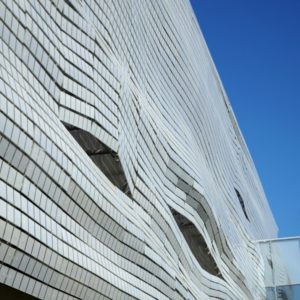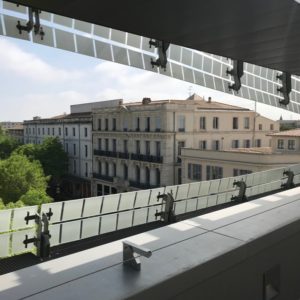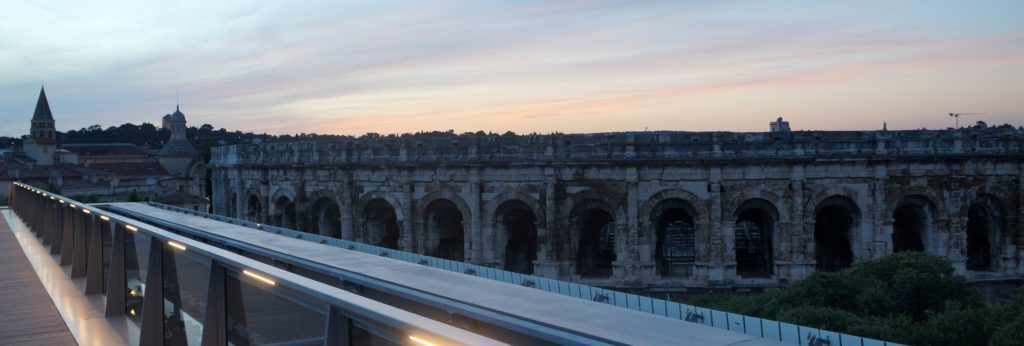The design of the museum
Here, History has a future
Famous for its rich classical past, Nîmes highlights the remarkable state of conservation of its Roman monuments. In 2006-2007, during preventive archaeological excavations before works in Allées Jaurès, a domus (Roman house) and two mosaics—’Achilles’ and ‘Pentheus’ were found. In an excellent state of conservation, they were described by specialists as ‘the finest pieces after those of Pompeii’. The discovery strengthened the determination of Jean-Paul Fournier, Mayor of Nîmes, to examine a project for a contemporary museum to exhibit these extremely rare works, together with those held by the nineteenth century archaeological museum that had become too small.
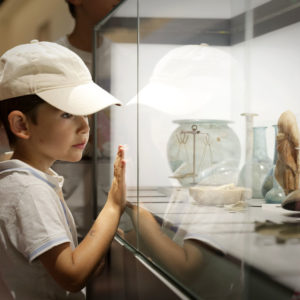
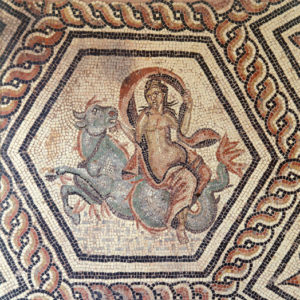
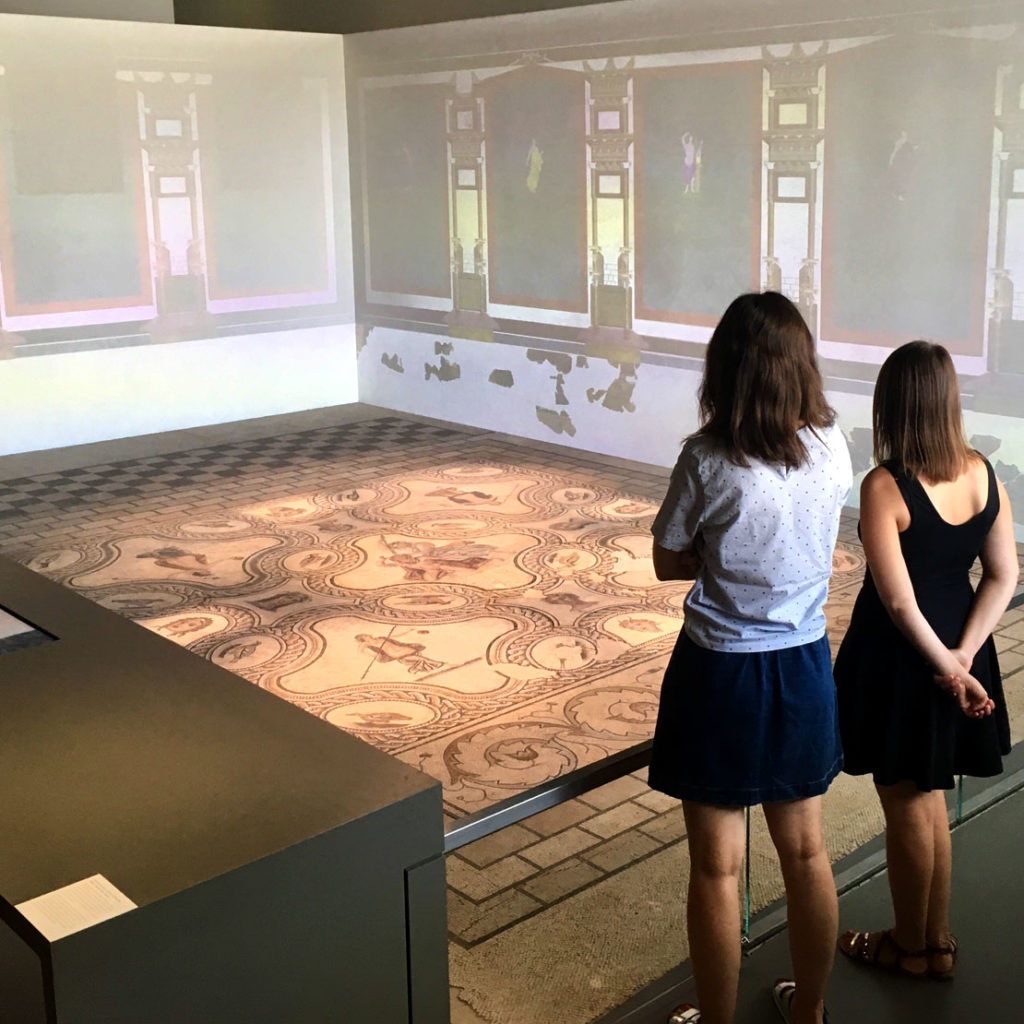
“Revealing how the identity of Nîmes is rooted in its Roman past, the Musée de la Romanité is one of the most outstanding architectural and cultural projects of the early part of this century for the City of Nîmes and also for the entire region.
Guided by a strong requirement to show and pass on our magnificent heritage to future generations, we have done everything possible to make this museum an exceptional showcase for our impressive archaeological collections, which have been restored on this occasion.”
Jean-Paul Fournier
Mayor of Nîmes
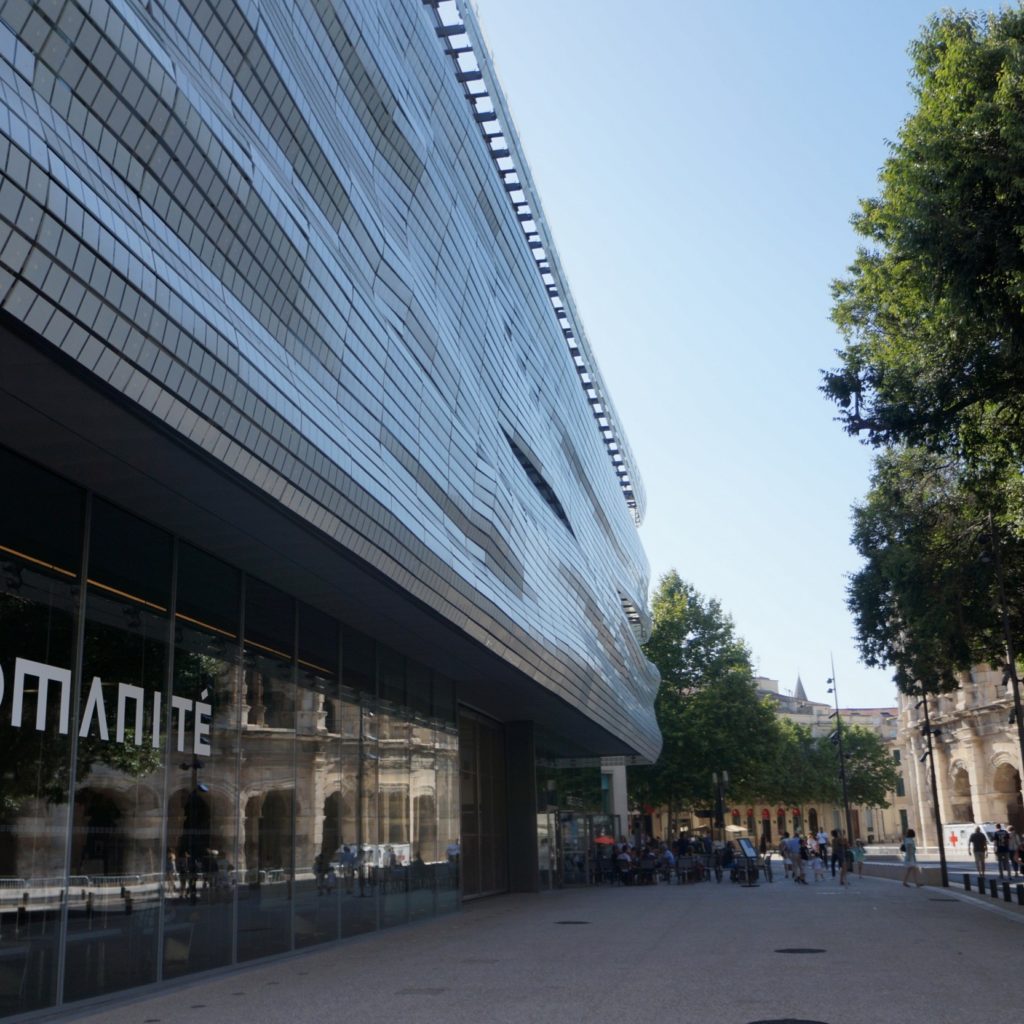
Creating a setting for the archaeological collections
The architectural competition was launched in June 2011 and the jury shortlisted three of the 103 projects received, before declaring, a year later, that the winning project was that of Elizabeth de Portzamparc of the practice 2Portzamparc. In addition to the town planning and architectural design of the museum, Elizabeth de Portzamparc has also designed the museography, the interior architecture and items of furniture.
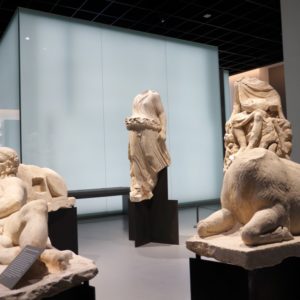
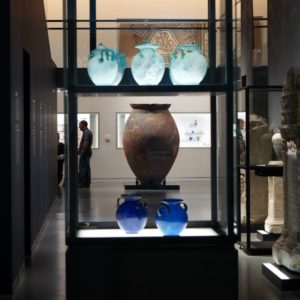
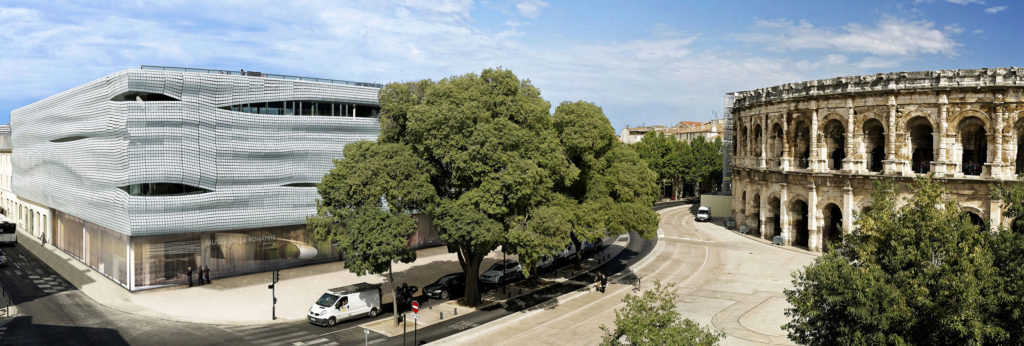
An architectural dialogue
Opposite the Nîmes Arena, the Musée de la Romanité is at the edge of the historical centre of the town. Intersected by remains of the Roman ramparts, it is on the ‘backbone’ of the site—that used to be the boundary between the medieval town and the modern town. Much more than setting up a simple confrontation, Elizabeth de Portzamparc has generated true architectural dialogue between two buildings separated by 2000 years of history.
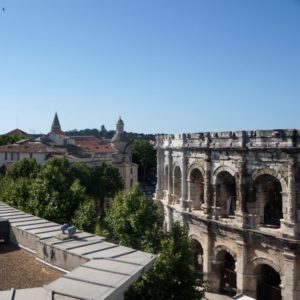
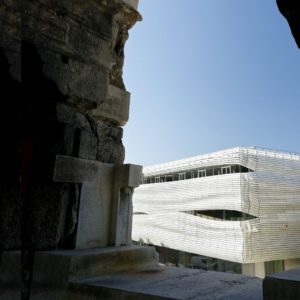
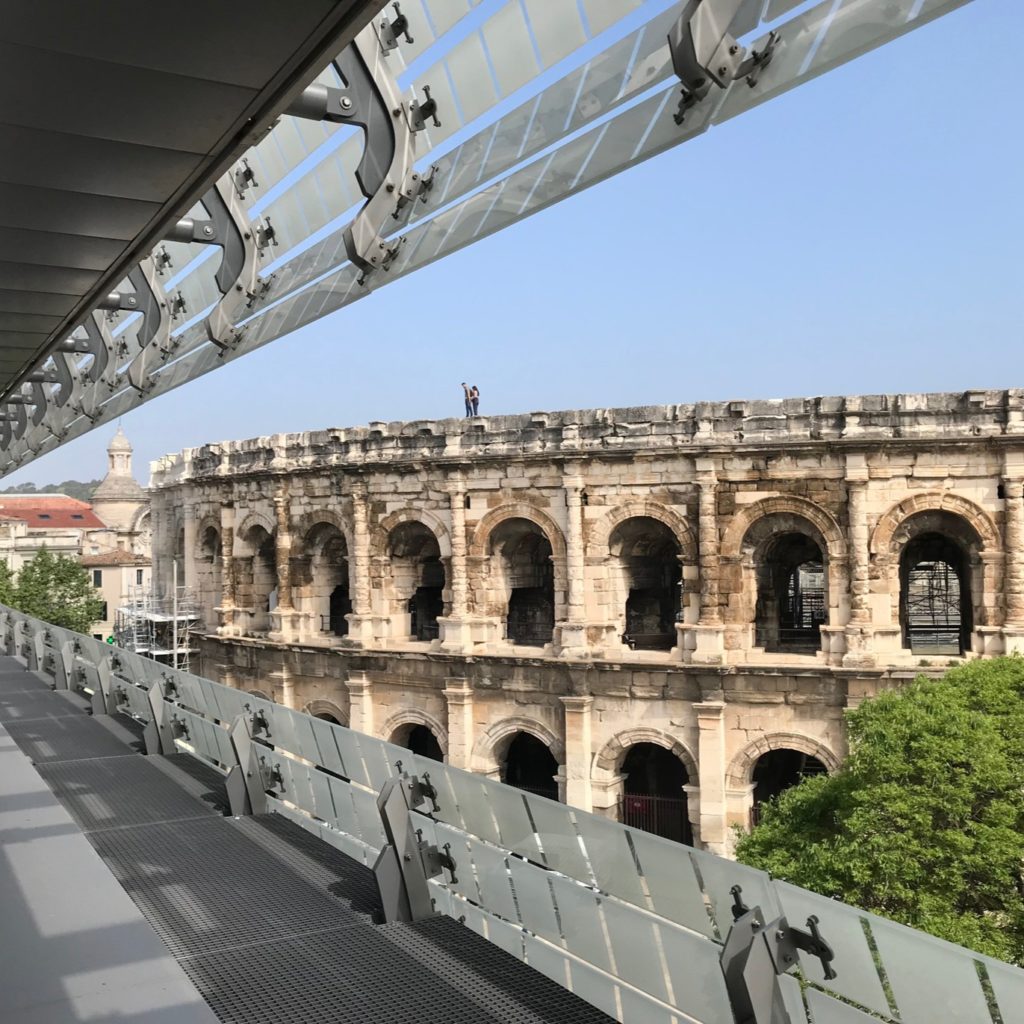
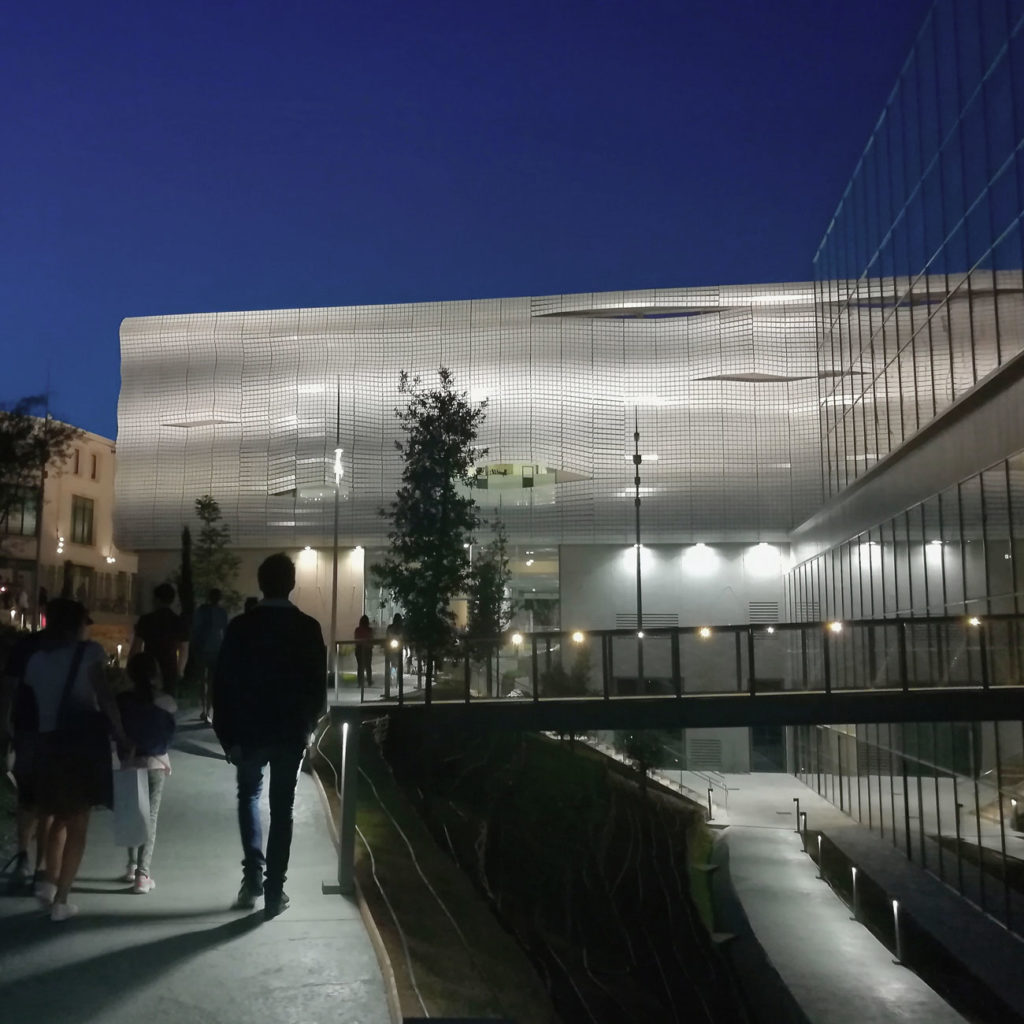
“The competition explicitly requested the creation of a museum that would be a contemporary response to the Roman Arena. I analysed the Arena for a long time and asked myself about the very notion of a contemporary building and how to exalt the 21 centuries of history separating the two structures. Designing light architecture—made possible by present technology—seemed obvious to me, as did expressing the differences between the two architectures through dialogue based on their complementarity. On one side a round volume enclosed by the verticals of the Roman stone arches and firmly anchored in the ground and on the other a large square volume, set in levitation and draped entirely in a folded glass toga.”
Elizabeth de Portzamparc
The two facing buildings complete each other harmoniously through their forms, lines and masses: the oval and the rectangle, the vertical and the horizontal, the density of stone and the lightness of glass. This dialogue continues inside the museum as both the façade and the glassed inner structure use transparency and a play of perspectives to show the rich heritage of Nîmes. Open to the town and to the people concerned, the museum has been designed as a place for living that can be adopted easily—its architecture favours spatial and human interconnections and enhances local activities and the quality of life for those who go there. The axes and links created between the streets and squares adjoining the site confer considerable urban permeability and new routes across the town.
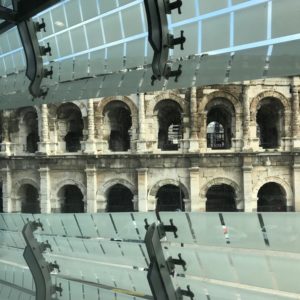
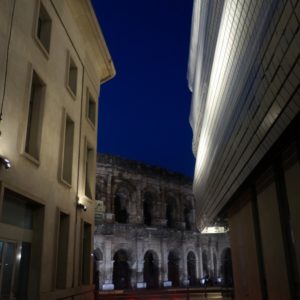
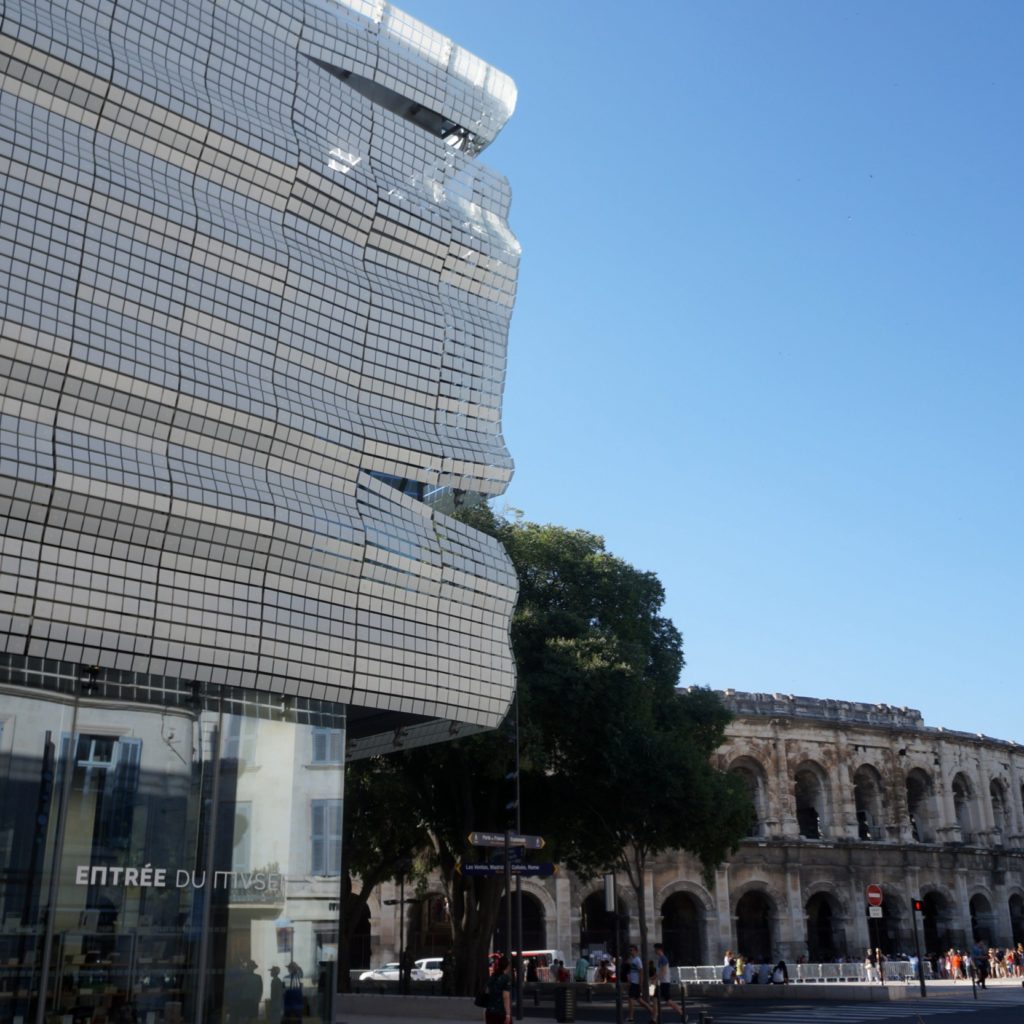
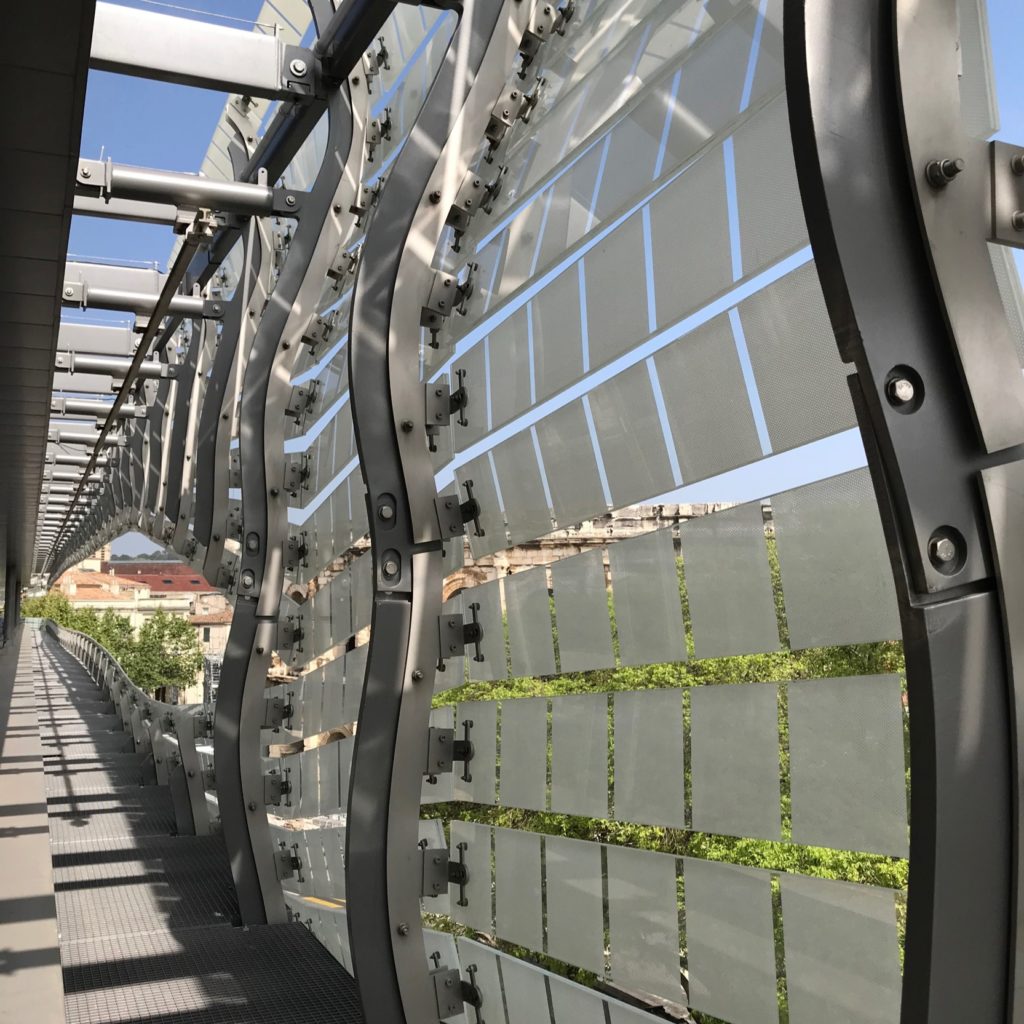
A technological challenge
Elizabeth de Portzamparc chose sober, light and refined architecture based on the lightening of masses and economy of forms’. This gives the building its impression of lightness and levitation. Silk-screen printed cladding fitted by hand to undulating stainless steel framing envelopes the four sides of the museum (surface area 2,500m²). This structure consisting of 6,708 glass tiles similar to mosaic gives the whole a very light drapery effect that brings to mind a Roman toga.
